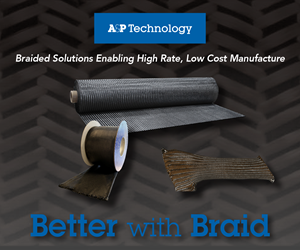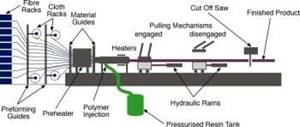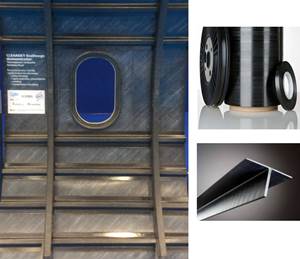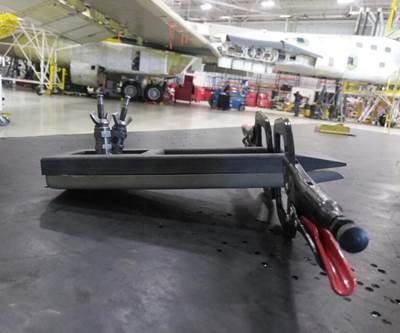Impossible Objects, Owens Corning to produce new high-performance 3D printing materials
Collaboration will develop tailor-made materials for composite-based AM, bring CBAM process to industrial scale to compete with other high-volume manufacturing methods.

Carbon fiber/PEEK and fiberglass/PEEK solder pallets produced with the Impossible Objects’ CBAM-2 printer. These parts, used in electronics manufacturing, must withstand high temperatures and harsh chemicals.. Photo Credit: Impossible Objects
Impossible Objects (Northbrook, Ill., U.S.) has announced a joint development agreement with Owens Corning (Toledo, Ohio, U.S.) to develop new materials for Impossible Objects’ composite-based additive manufacturing (CBAM) process.
The collaboration with Owens Corning, a global building and industrial materials leader, will reportedly enable the production of stronger parts at costs lower than other 3D printing processes. According to Impossible Objects, fiberglass composites boast key advantages for 3D-printed parts, including substantially greater strength-to-weight ratios compared to aluminum, lower costs, superior high-temperature performance and greater chemical resistance. Lowering material cost is important for broadening adoption of additive manufacturing (AM); research has shown that costs of materials used in 3D printing can be higher than traditional manufacturing materials by up to a factor of eight on a per-weight basis.
“Owens Corning is committed to the development of composite materials and their applications,” says Dr. Chris Skinner, vice president of Strategic Marketing, Composites, Owens Corning. “We seek to be at the forefront of new processing and new applications involving composites. We have found the Impossible Objects technology and know-how potentially transformative for the conversion of some applications to composites. Because we believe it can be successful and deliver value to the market and our customers, we’ve entered into a joint agreement to support the development further.”
According to Robert Swartz, chairman and founder of Impossible Objects, the company’s CBAM process offers 3D printing with faster speeds, better material properties and wider material selection. “This collaboration with Owens Corning will allow us to quickly experiment with and refine new materials to significantly lower cost and bring unprecedented options for additive manufacturing,” Swartz says.
Impossible Objects’ proprietary CBAM technology is said to produce parts up to ten times faster than conventional fused deposition modeling (FDM) 3D printing. By combining high-performance polymers like Nylon and PEEK with carbon fiber and fiberglass nonwoven materials, parts printed with Impossible Objects machines are said to be stronger, lighter, have better dimensional accuracy and have better temperature performance than what’s possible with conventional 3D printing methods. The CBAM process can use a great variety of long-fiber materials including carbon fiber and fiberglass paired with PEEK, PA 6, PA 12, elastomerics and most other thermoplastics. Additional material developments are also being processed.
By bringing together Impossible Objects’ CBAM process and Owens Corning’s fully integrated glass nonwoven manufacturing capabilities, the joint development agreement will allow the scaling of the CBAM process to industrial scale, enabling it to compete with other high-volume manufacturing methods like injection molding. The CBAM process can eliminate the long lead-times and tooling costs involved in injection molding, while enabling mass customization of parts. CBAM also allows for the combination of parts, resulting in lower assembly costs.
Owens Corning is the latest materials leader to join forces with Impossible Objects to enable the development of the CBAM process. In May 2019, the chemical company BASF (Wyandotte, Mich., U.S.) entered a collaboration with Impossible Objects to 3D print high-performance carbon fiber-PA6 composite parts for the first time. Also in 2019, TIGER Coatings (Wels, Austria) began work with Impossible Objects for the development of thermoset-based 3D printed composites. More recently, the company has joined 3D printing specialist Ricoh 3D (Shropshire, U.K.) to make strong and lightweight printed composite parts available to Ricoh 3D’s customers in Europe for the first time.
Related Content
Plant tour: Joby Aviation, Marina, Calif., U.S.
As the advanced air mobility market begins to take shape, market leader Joby Aviation works to industrialize composites manufacturing for its first-generation, composites-intensive, all-electric air taxi.
Read MorePultrusion: The basics
A primer describing what pultrusion is, its advantages and disadvantages, and typical applications.
Read MorePEEK vs. PEKK vs. PAEK and continuous compression molding
Suppliers of thermoplastics and carbon fiber chime in regarding PEEK vs. PEKK, and now PAEK, as well as in-situ consolidation — the supply chain for thermoplastic tape composites continues to evolve.
Read MoreLarge-format 3D printing enables toolless, rapid production for AUVs
Dive Technologies started by 3D printing prototypes of its composite autonomous underwater vehicles, but AM became the solution for customizable, toolless production.
Read MoreRead Next
UAMMI, Impossible Objects build composite parts for U.S. Air Force
UAMMI is using Impossible Objects’ composite 3D printing technology to build 3D-printed carbon fiber/thermoplastic replacement parts for defense aircraft.
Read MoreVIDEO: High-volume processing for fiberglass components
Cannon Ergos, a company specializing in high-ton presses and equipment for composites fabrication and plastics processing, displayed automotive and industrial components at CAMX 2024.
Read MoreDeveloping bonded composite repair for ships, offshore units
Bureau Veritas and industry partners issue guidelines and pave the way for certification via StrengthBond Offshore project.
Read More

























